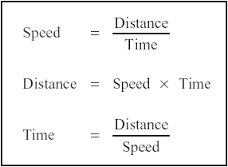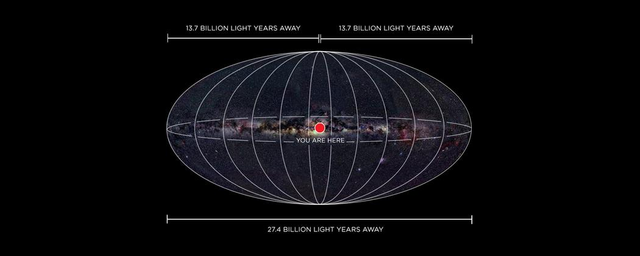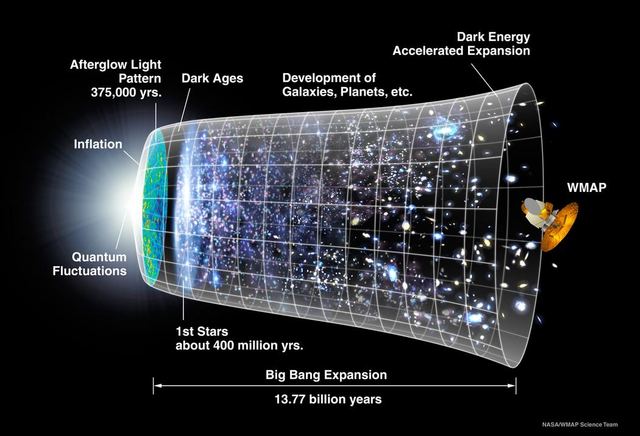A Controversial Theory: Light Speed Is Not Constant, But Slower And Slower?
The notion that light has a particular speed, and that that speed is measurable, is relatively new.
If the speed of light is variable, and the past is faster than it is now, some cosmological challenges can be solved.

source
In 1905, 26-year-old Albert Einstein proposed a special theory of relativity that changed the trajectory of physics. The special theory of relativity describes the relationship between time and space. It is based on two basic assumptions: the laws of physics are the same for all observers of uniform motion; the speed of light in a vacuum is constant for any observer.
Over the past century, Einstein's Special Theory of Relativity and General Theory of Relativity have stood the test of experiment and can be used to explain many physical phenomena, including the origin of the universe. However, in the late 1990s, a handful of physicists challenged a fundamental assumption of special relativity. They think the speed of light is not constant: in the early universe, the speed of light was faster than it is now.

Since the date of its introduction, the theory of variable light velocities has been controversial. According to a paper published in Physics Review D, this theory is expected to be tested in the near future. If experimental results support the theory of variable light velocities, then that means that the laws of nature are not as constant as we understand today, and we need to revisit Einstein's theory of gravity.
"Modern physics is entirely based on the 'constant velocity of light', said Joao Magueijo, an cosmologist at Imperial College London, who originally proposed a theory of variable light velocities" so we have to find ways to make it work without changing the existing physical system On the basis of having too much influence, the speed of light variability is embedded in it. "
Magueijo said that he proposed a theory of variable light velocities in order to solve the "horizon problem" that has long existed in cosmology - precisely because of the assumption of constant light velocities.
If the speed of light remains the same, then since the big bang about 13.7 billion years ago, light has only been able to travel about 137 billion light-years in the universe. This limitation of the distance traveled by the light implies that the visible range of the universe is bounded by a radius of about 47 billion light-years (although light can travel only 13.7 billion light-years, we should also calculate the cosmic expansion effect Including).
We visualize the visible universe as a 47 billion light-year-old ball, and we sit in the center of the ball. The ball's boundaries, the universe's horizon, are where the cosmic microwave background (CMB) is emitted. The cosmic microwave background is the radiation that originated about 400,000 years after the Big Bang and was the earliest cosmic image humankind can access. Wherever you are in the universe, you are at the center of your cosmic horizon, and the cosmic microwave background you are observing now is 13.7 billion light-years away from you.
The problem is that from any point in the universe to the point where microwave background radiation is emitted at 13.7 billion light-years, the distance between the microwave background radiation at the two ends of the cosmic horizon is about 27.4 billion light-years. This means that the universe is too large and light can not travel from one end to the other over the lifetime of the universe. However, this contradicts our observation of the homogeneity of microwave background radiation.

The horizon problem. Image: Taylor Lewis/VICE
Cosmologists have observed that the cosmic microwave background radiation is extremely uniform. The temperature of the microwave background radiation in either direction of the sky is about -270 ° C, with a relative fluctuation of only one in 100,000. However, if the fastest moving light in the universe and the life span of the exhaustive universe can not pass from one end of the universe to the other, then we will not be able to observe such uniform microwave background radiation.
To understand the truth, we can use the bathtub to analogize the universe. There is a faucet at each end of the tub, one of them is cold water and the other is hot water. If you turn off the two faucets, the cold and hot water mix and the water in the tub eventually reaches a uniform temperature. However, if at the same time when the water is infused, the tub extends rapidly outward in all directions, so that the cold water and the hot water can never meet, the tub will always be cold water at one end and will always be hot water at the other end and will not reach the same temperature.
The process of the Big Bang is similar to that of an extended bathtub, but what about the microwave background radiation that reflects the temperature in the universe at the beginning of the cosmos without being hot and cold?
At present, inflation theory calls for the highest of all the hypotheses trying to solve the "horizon problem." According to inflation theory, the reason why the microwave radiation in the universe is so uniform is that the universe has reached a uniform state in a small and dense phase and then continues to be uniform during the inflation. This is equivalent to the fact that the water in the tub first mixes to a uniform temperature before it begins to extend rapidly outward.
Although inflation theory is compatible with the invariance of the speed of light, it requires that there be an "inflational space" and that this field exists only for a brief period of time in the early universe.

A timeline of the universe on the inflation model. Image:NASA/WMAP science team
However, proponents of the theory of variable light velocities say that if the speed of light in the early universe is much higher than in today's universe, the horizon problem can be solved without resorting to inflation. As a result, the two ends of the cosmos that are far apart can remain "connected" during the expansion of the universe, resulting in uniform microwave background radiation throughout the universe.
However, for a theoretical physicist who supports the inflationary universe model, allowing the speed of light to change is like reversing the sign of special relativity.
"In most cases, this reversal of the sign can lead to some catastrophic consequences because the changed theory may not be physically self-consistent," said David Marsh, a senior fellow at the Center for Theoretical Cosmology at the University of Cambridge. He also mentioned some of the challenges that follow, but much remains to be done in order to construct a truly sound theoretical model, and if the theory of light-velocity can really stand its ground, it will not only affect cosmology, It will also have far-reaching implications for the whole physics. "
So, just shortly after the Big Bang, what is the speed of light faster than it is now? The answer given by Magueijo and his colleague Niayesh Afshordi, assistant professor of physics and astronomy at the University of Waterloo, is: infinitely faster.
The two physicists pointed out that the speed of light in the early universe was at least 32 orders of magnitude faster than the current 300,000 km / s, which is only a lower limit. As time approaches the moment of the Big Bang, the speed of light will also tend to infinity.
According to the variable speed of light point of view, the speed of light is faster because of the high temperature of the early universe. Afshordi notes that their theory requires that the Early Universe was a stove that was at least 1028 degrees Celsius. In contrast, the highest human being can reach on Earth is only 1016 degrees Celsius, a difference of more than 12 orders of magnitude from the early universe.
As the universe expands, its temperature drops below 1028 degrees Celsius. Just as the temperature of the liquid water drops to a certain extent, it will freeze. Light undergoes a phase change and the speed of light becomes the current 300,000 km / s. The ice is not harder due to lower temperatures, and the speed of light does not get slower due to lower temperatures, so the light stays there for no longer changing.
If Magueijo and Afshordi's theory of variable light velocities is correct, then we can predict the slow speed of light, which means we can measure the decay of light speed as long as we have a sufficiently sophisticated measuring device. That's exactly what's in their latest essay.
Afshordi said that galaxies and other structures in the universe can exist because of the fluctuations in the density of the early universe. These density fluctuations are reflected in the "spectral index" of the cosmic microwave background radiation, which we can imagine as the different "colors" of the early universe. The central reference value of the spectral index is 1, corresponding to a universe with the same magnitude of gravity fluctuations on each scale. When the spectral index is higher than 1, the universe is "blue", representing a bias toward the fluctuation of short wavelengths. When the spectrum index is below 1, the universe is "red" and represents a bias toward long wavelengths.
Although the red spectral index is also included in the inflation universe model, the value of the spectral index can not be calculated accurately and hence the exact value of gravity fluctuations in the early universe can not be calculated. In the new paper, Magueijo and Afshordi gave a spectral index of 0.96478, slightly reddish, a result that is two orders of magnitude more accurate than the currently measured spectral index (about 0.968).
Now that the two physicists have deduced the more rigorous results of the spectral index using the theory of variable light velocities, the next step is to improve the experimental accuracy to detect the cosmic microwave background radiation and the distribution of galaxies in cosmic space, Whether to confirm or disprove the theory of variable speed of light. Both Magueijo and Afshordi predict that enough accurate results will be obtained by 2020, but Marsh and other physicists remain cautious.
"The Afshordi and Magueijo models are more complex than the inflation theory and we have not understood it well," Marsh said. "However, our understanding of inflation theory has been developing for more than 35 years and there are still As long as more time and research effort are devoted, the theoretical basis of the variable speed model of light may of course be more deeply understood and the theoretical predictions it makes will be more beautiful.To understand the article a following video
is quite useful.
source
If the theory of variable light velocities is confirmed, it will overturn one of the main axioms of Einstein's special theory of relativity, forcing physicists to reconsider the nature of gravity. However, Afshordi said that more or less the physics community thinks that Einstein's gravitational theory can not contain the whole picture of physics. In the future, there will surely be a quantum gravitational theory to replace general relativity. At present, physicists have proposed many possible solutions to compete for the throne of quantum gravity theory. However, if the theory of variable light velocities is verified as true, then the range of options of quantum gravitation theory will be greatly reduced.
"If we want to observe the phenomenon of quantum gravity, then it is best to abandon the concept of inflation," said Magueijo. "The inflation model is actually shying away from fundamental physics, isolating the observable universe from the one that goes beyond relativity. Changing the speed of light is the basis for revisiting physics and trying to break the theory of relativity, which is the best way to open new concepts and new theories. "

References for Text and Images:
- https://www.smithsonianmag.com/smart-news/speed-light-can-vary-180953949/
- https://motherboard.vice.com/en_us/article/8q87gk/light-speed-slowed
- https://www.space.com/37244-why-is-the-speed-of-light-so-slow.html
- https://www.space.com/15830-light-speed.html
- http://www.pbs.org/wgbh/nova/blogs/physics/2015/02/brief-history-speed-light/
Support @steemstem and the #steemstem
project - curating and supporting quality STEM
related content on Steemit

New concepts are challenging and hard to accept.
Hope the article is found useful.
This makes no sense at all... Steel doesn't even melt until around 1300-1500 degrees Celsius... This is just one point that makes no sense, of many. Way too much is far too factually incorrect to even consider... The hottest temperature reached on Earth is in the trillions of degrees Celsius and in those instances we do not see the speed of light increase....
This post has received a 1.18% upvote from thanks to: @punjolife.
thanks to: @punjolife.
For more information, click here!!!!
Send minimum 0.050 SBD|STEEM to bid for votes.
Do you know, you can also earn daily passive income simply by delegating your Steem Power to @minnowhelper by clicking following links: 10SP, 100SP, 500SP, 1000SP or Another amount
Greetings! I am a minnow exclusive bot that gives a 5X upvote! I recommend this amazing guide on how to be a steemit rockstar! I was made by @EarthNation to make Steemit easier and more rewarding for minnows.
Very interesting @punjolife. Is there widespread support for the theory of variable light speed amongst theoretical physicists or is it a small group that advocated it?